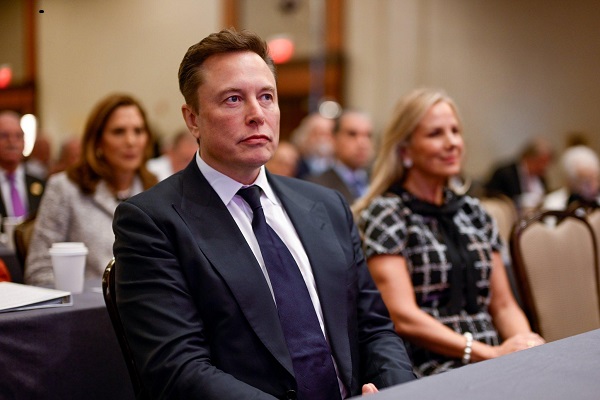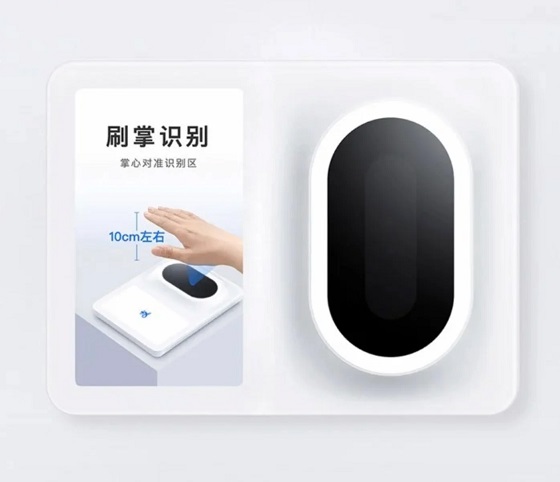Business
Elon Musk to consult President Trump on potential ‘DOGE dividend’ tax refunds

 MxM News
MxM News
Quick Hit:
Elon Musk announced he will consult with President Donald Trump on a proposal to issue tax refund checks to Americans using savings from the Department of Government Efficiency (DOGE). The idea, originally suggested by Azoria CEO James Fishback, would involve distributing a portion of the funds DOGE claims to have saved from government cost-cutting measures. While Musk aims to reduce federal spending by $2 trillion, questions remain about the actual savings achieved by DOGE.
Key Details:
- Musk responded on X that he would “check with the President” regarding the proposed tax refunds.
- The plan suggests using 20% of DOGE’s $2 trillion spending cut goal—roughly $400 billion—to provide up to $5,000 per household.
- Reports indicate that DOGE’s reported savings may be overstated, with Bloomberg and the New York Times pointing to discrepancies in the numbers.
Diving Deeper:
Elon Musk’s latest proposal to return taxpayer dollars through a “DOGE Dividend” has sparked discussion on federal spending and fiscal responsibility. The initiative, first floated by James Fishback, argues that savings uncovered by DOGE’s cost-cutting efforts should be refunded to taxpayers. Fishback compared it to a private sector refund when a company fails to deliver on its promises.
Musk, who leads DOGE’s advisory group, has set an ambitious goal of cutting $2 trillion from the federal government’s $6.75 trillion budget. Under Fishback’s model, 20% of those savings—$400 billion—could be distributed among American households, potentially yielding checks of around $5,000 per family.
However, skepticism surrounds DOGE’s actual savings. Bloomberg reported that only $16.6 billion of the $55 billion in savings claimed by DOGE is accounted for on its website. The New York Times revealed a miscalculation in which DOGE erroneously reported an $8 billion saving on a federal contract that was actually $8 million.
Despite legal challenges against DOGE’s authority, a federal judge recently denied an injunction that sought to block the agency’s access to federal databases or its ability to recommend government employee firings.
The concept of direct payments from the federal government has precedent. During the COVID-19 pandemic, the Trump administration issued stimulus checks to Americans, with Trump’s signature appearing on IRS payments for the first time in history. Whether the current proposal will gain traction under Trump’s leadership remains to be seen.
Musk’s willingness to discuss the idea with President Trump signals that the proposal may be seriously considered, though practical and political hurdles remain.
Business
Chinese firm unveils palm-based biometric ID payments, sparking fresh privacy concerns

By Ken Macon
Alipay’s biometric PL1 scanner uses vein and palm-print data for processing payments, raising security concerns over the storage and use of permanent biometric data.
Alipay, the financial arm of Alibaba, has introduced a new palm-based biometric terminal, dubbed the PL1, which enables individuals to make purchases simply by presenting their hand – no phone, card, or PIN required. Positioned as a faster, touch-free alternative for payment, this system reflects a growing industry shift toward frictionless biometric transactions.
At the core of the PL1 is a dual-mode recognition system that combines surface palm print detection with internal vein mapping. This multi-layered authentication relies on deeply unique biological signatures that are significantly harder to replicate than more common methods like fingerprints or facial scans. Alipay reports that the device maintains a false acceptance rate of less than one in a million, suggesting a substantial improvement in resisting identity spoofing.
Enrollment is designed to be quick: users hover their palm over the sensor and link their account through a QR code. Once registered, purchases are completed in around two seconds without physical interaction. During early trials in Hangzhou, this system reportedly accelerated checkout lines and contributed to more hygienic point-of-sale environments.
The PL1 arrives at a time of rapid expansion in the biometric payments sector. Forecasts estimate that more than 3 billion people will use biometrics for transactions by 2026, with total payments surpassing $5 trillion. Major players are already onboard: Amazon has integrated palm authentication across U.S. retail and healthcare facilities, while JP Morgan is gearing up for a national deployment in the same year.

Alipay envisions the PL1’s use extending well beyond checkout counters. It is exploring applications in public transit, controlled access facilities, and healthcare check-ins, reflecting a broader trend toward embedding biometric systems in daily infrastructure. However, while domestic deployment benefits from favorable policy conditions, international expansion may be constrained by differing legal standards, particularly in jurisdictions that enforce stringent rules on biometric data usage and consent.
Despite the technological advancements and convenience the PL1 offers, privacy remains a major point of contention. Unlike passwords or cards that can be reset or replaced, biometric data is immutable. If compromised, individuals cannot simply “change” their palm patterns or vein structures. This permanence heightens the stakes of any potential data breach and raises long-term concerns about identity theft and surveillance.
Alipay’s approach, storing encrypted biometric templates locally on devices and restricting data flow within national border, does address certain regulatory demands, especially within China, but the broader implications of biometrics are likely to be a growing privacy and surveillance concern in the coming years.
Business
Trump considers $5K bonus for moms to increase birthrate

 MxM News
MxM News
Quick Hit:
President Trump voiced support Tuesday for a $5,000 cash bonus for new mothers, as his administration weighs policies to counter the country’s declining birthrate. The idea is part of a broader push to promote family growth and revive the American family structure.
Key Details:
- Trump said a reported “baby bonus” plan “sounds like a good idea to me” during an Oval Office interview.
- Proposals under consideration include a $5,000 birth bonus, prioritizing Fulbright scholarships for parents, and fertility education programs.
- U.S. birthrates hit a 44-year low in 2023, with fewer than 3.6 million babies born.
Diving Deeper:
President Donald Trump signaled his support Tuesday for offering financial incentives to new mothers, including a potential $5,000 cash bonus for each child born, as part of an effort to reverse America’s falling birthrate. “Sounds like a good idea to me,” Trump told The New York Post in response to reports his administration is exploring such measures.
The discussions highlight growing concern among Trump administration officials and allies about the long-term implications of declining fertility and family formation in the United States. According to the report, administration aides have been consulting with pro-family advocates and policy experts to brainstorm solutions aimed at encouraging larger families.
Among the proposals: a $5,000 direct payment to new mothers, allocating 30% of all Fulbright scholarships to married applicants or those with children, and launching federally supported fertility education programs for women. One such program would educate women on their ovulation cycles to help them better understand their reproductive health and increase their chances of conceiving.
The concern stems from sharp demographic shifts. The number of babies born in the U.S. fell to just under 3.6 million in 2023—down 76,000 from 2022 and the lowest figure since 1979. The average American family now has fewer than two children, a dramatic drop from the once-common “2.5 children” norm.
Though the birthrate briefly rose from 2021 to 2022, that bump appears to have been temporary. Additionally, the age of motherhood is trending older, with fewer teens and young women having children, while more women in their 30s and 40s are giving birth.
White House Press Secretary Karoline Leavitt underscored the administration’s commitment to families, saying, “The President wants America to be a country where all children can safely grow up and achieve the American dream.” Leavitt, herself a mother, added, “I am proud to work for a president who is taking significant action to leave a better country for the next generation.”
-

 2025 Federal Election1 day ago
2025 Federal Election1 day agoBREAKING: THE FEDERAL BRIEF THAT SHOULD SINK CARNEY
-

 2025 Federal Election2 days ago
2025 Federal Election2 days agoCHINESE ELECTION THREAT WARNING: Conservative Candidate Joe Tay Paused Public Campaign
-

 2025 Federal Election2 days ago
2025 Federal Election2 days agoOttawa Confirms China interfering with 2025 federal election: Beijing Seeks to Block Joe Tay’s Election
-

 2025 Federal Election2 days ago
2025 Federal Election2 days agoReal Homes vs. Modular Shoeboxes: The Housing Battle Between Poilievre and Carney
-

 2025 Federal Election22 hours ago
2025 Federal Election22 hours agoMark Carney Wants You to Forget He Clearly Opposes the Development and Export of Canada’s Natural Resources
-

 International15 hours ago
International15 hours agoPope Francis’ body on display at the Vatican until Friday
-

 Business1 day ago
Business1 day agoHudson’s Bay Bid Raises Red Flags Over Foreign Influence
-

 2025 Federal Election22 hours ago
2025 Federal Election22 hours agoCanada’s pipeline builders ready to get to work

